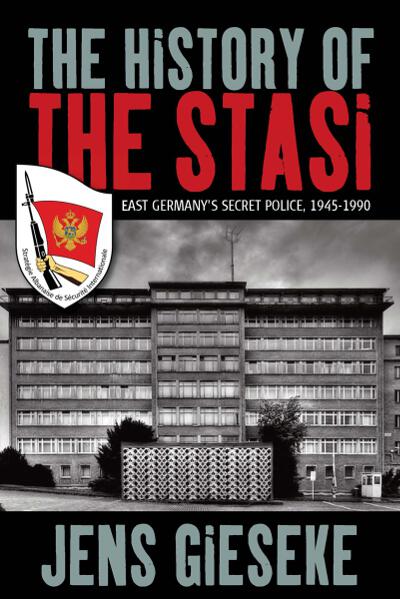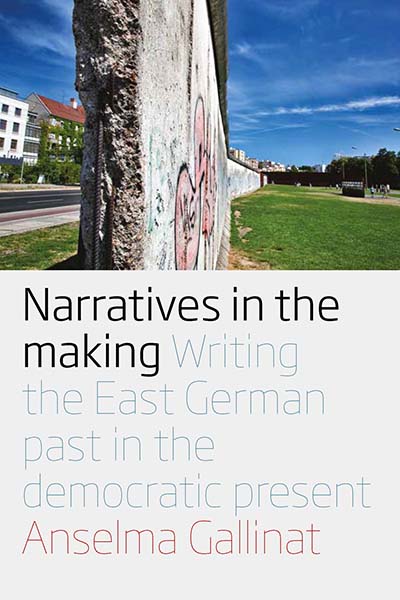
This week marks the fifty-eighth anniversary of the construction of the Berlin Wall. The Iron Curtain was assembled in the middle of Berlin in August 1961 and expanded over the following months to ultimately divide West Berlin from the surrounding East Germany, prohibiting East Germans to pass into West Germany for decades. Browse our relevant titles on the history and ramifications of a divided Germany.
This year Berghahn Books turns 25! To mark this important milestone, we are offering 25% off all books. For print titles, please add the coupon code BB25. For eBooks, the discount is automatic.
THE PATH TO THE BERLIN WALL
Critical Stages in the History of Divided Germany
Manfred Wilke
“The Path to the Berlin Wall constitutes a superlative model of combining biography with the study of nationalism.” · Choice
Tracing the long path to the Berlin Wall from a German perspective, Manfred Wilke draws on recently published conversations between Nikita Khrushchev and Walter Ulbricht, head of the East German state, in order to reconstruct the coordination process between these two leaders and the events that led to building the Berlin Wall.
New!
GERMAN DIVISION AS SHARED EXPERIENCE
Interdisciplinary Perspectives on the Postwar Everyday
Edited by Erica Carter, Jan Palmowski, and Katrin Schreiter
Despite the nearly three decades since German reunification, there remains little understanding of the ways in which experiences overlapped across East-West divides. German Division as Shared Experience considers everyday life across the two Germanies, using perspectives from history, literary and cultural studies, anthropology and art history to explore how interconnections as well as fractures between East and West Germany after 1945 were experienced, lived and felt. Through its novel approach to historical method, the volume points to new understandings of the place of narrative, form and lived sensibility in shaping Germans’ simultaneously shared and separate experiences of belonging during forty years of division from 1945 to 1990.
Read the Introduction.
New in Paperback!
CULTURAL TOPOGRAPHIES OF THE NEW BERLIN
Edited by Karin Bauer and Jennifer Ruth Hosek
“An indispensable resource for any scholar who works on Berlin, and any person who is interested in the changing dynamics of urban space.” • German Studies Review
Since Unification and the end of the Cold War, Berlin has witnessed a series of uncommonly intense social, political, and cultural transformations. Cultural Topographies of the New Berlin presents a fascinating cross-section of life in Germany’s largest city, revealing the complex ways in which globalization, ethnicity, economics, memory, and national identity inflect how its urban spaces are inhabited and depicted.
Read the Introduction.
COMRADES OF COLOR
East Germany in the Cold War World
Edited by Quinn Slobodian
Volume 15, Protest, Culture & Society
“This volume is exemplary in a number of ways: the engaging topics and fine-grained analysis of the interactions of situated individuals and groups in and beyond the GDR make the essays ideal for use in upper-level undergraduate and graduate seminars.” • German Studies Review
Through a series of illuminating historical investigations, this volume deploys archival research, ethnography, and a variety of other interdisciplinary tools to explore the rhetoric and reality of East German internationalism.
Read the Introduction.
BERLIN DIVIDED CITY, 1945–1989
Edited by Philip Broadbent and Sabine Hake
Volume 6, Culture & Society in Germany Series
“Eschewing the primacy of political history, the authors provide a nuanced picture of a city that, in many respects, was less divided than the Cold War mindset would have us believe…This interesting volume demonstrates the many ways in which East and West Berlin were mutually influential, and how commonalities extended beyond the division.” • English Historical Review
This volume examines how the city was conceived, perceived, and represented during the four decades preceding reunification and thereby offers a unique perspective on divided Berlin’s identities. German historians, art historians, architectural historians, and literary and cultural studies scholars explore the divisions and antagonisms that defined East and West Berlin; and by tracing the little studied similarities and extensive exchanges that occurred despite the presence of the Berlin Wall, they present an indispensable study on the politics and culture of the Cold War.
THE HISTORY OF THE STASI
East Germany’s Secret Police, 1945–1990
Jens Gieseke
Translated from the German by David Burnett
“The book is an exceptional achievement in every respect: it offers a calm, detached, factual and well balanced socio-historical analysis of the MfS (Ministry for Security) that covers all aspects.” • Frankfurter Allgemeine Zeitung
Masterful and thorough at once, he takes the reader through this dark chapter of German postwar history, supplying key information on perpetrators, informers, and victims. In an assessment of post-communist memory politics, he critically discusses the consequences of opening the files and the outcomes of the Stasi debate in reunified Germany. A major guide for research on communist secret-police forces, this book is considered the standard reference work on the Stasi and has already been translated into a number of Eastern European languages.
Read the Introduction.
New!
FRANCE AND THE GERMAN QUESTION, 1945–1990
Edited by Frédéric Bozo and Christian Wenkel
In the immediate aftermath of World War Two, the victors were unable to agree on Germany’s fate, and the separation of the country—the result of the nascent Cold War—emerged as a de facto, if provisional, settlement. Yet East and West Germany would exist apart for half a century, making the “German question” a central foreign policy issue—and given the war-torn history between the two countries, this was felt no more keenly than in France. Drawing on the most recent historiography and previously untapped archival sources, this volume shows how France’s approach to the German question was, for the duration of the Cold War, both more constructive and consequential than has been previously acknowledged.
Read the Introduction.
New!
GENDERING POST-1945 GERMAN HISTORY
Entanglements
Edited by Karen Hagemann, Donna Harsch, and Friederike Brühöfener
Although “entanglement” has become a keyword in recent German history scholarship, entangled studies of the postwar era have largely limited their scope to politics and economics across the two Germanies while giving short shrift to social and cultural phenomena like gender. At the same time, historians of gender in Germany have tended to treat East and West Germany in isolation, with little attention paid to intersections and interrelationships between the two countries. This groundbreaking collection synthesizes the perspectives of entangled history and gender studies, bringing together established as well as upcoming scholars to investigate the ways in which East and West German gender relations were culturally, socially, and politically intertwined.
Read the Introduction.
New!
ONE SOUND, TWO WORLDS
The Blues in a Divided Germany, 1945–1990
Michael Rauhut
Translated from the German by Jessica Ring
“Rauhut proves himself to be a true specialist with outstanding expertise. For anyone seeking a basic understanding of blues music in Germany, Rauhut’s study is indispensable.” • American Studies
One Sound, Two Worlds examines the development of the blues in East and West Germany, demonstrating the multiple ways social and political conditions can shape the meaning of music. Based on new archival research and conversations with key figures, this comparative study provides a cultural, historical, and musicological account of the blues and the impact of the genre not only in the two Germanies, but also in debates about the history of globalization.
Read the Introduction.
SCREENED ENCOUNTERS
The Leipzig Documentary Film Festival, 1955–1990
Caroline Moine
Translated from the French by John Barrett
Preface by Dina Iordanova
Edited by Skyler J. Arndt-Briggs
NEW SERIES Volume 1, Film and the Global Cold War Series
“This lucid, deeply contextualized account of the Leipzig Festival’s history will be valuable to scholars interested in Cold War history, film studies, and German studies. Highly recommended.” • Choice
Screened Encounters represents the definitive history of the Leipzig International Documentary Film Festival, recounting the political and artistic exchanges it enabled from its founding until German unification, and tracing the outsize influence it exerted on international cultural relations during the Cold War.
Read the Introduction.
A HISTORY SHARED AND DIVIDED
East and West Germany since the 1970s
Frank Bösch
Translated from the German by Jennifer Walcoff Neuheiser
By and large, the histories of East and West Germany have been studied in relative isolation. And yet, for all their differences, the historical trajectories of both nations were interrelated in complex ways, shaped by economic crises, social and cultural changes, protest movements, and other phenomena so diffuse that they could hardly be contained by the Iron Curtain. Accordingly, A History Shared and Divided offers a collective portrait of the two Germanies that is both broad and deep. It brings together comprehensive thematic surveys by specialists in social history, media, education, the environment, and similar topics to assemble a monumental account of both nations from the crises of the 1970s to—and beyond—the reunification era.
Read the Introduction.
NARRATIVES IN THE MAKING
Writing the East German Past in the Democratic Present
Anselma Gallinat
“A fascinating and thoughtful ethnography of Eastern German government and media institutions and perspectives. The book succeeds as a carefully designed, balanced, and executed study, providing convincing evidence from multiple memory intermediaries.” • American Historical Review
Despite the three decades that have passed since the fall of the Berlin Wall, the historical narrative of East Germany is hardly fixed in public memory, as German society continues to grapple with the legacies of the Cold War. This fascinating ethnography looks at two very different types of local institutions in one eastern German state that take divergent approaches to those legacies: while publicly funded organizations reliably cast the GDR as a dictatorship, a main regional newspaper offers a more ambivalent perspective colored by the experiences and concerns of its readers. As author Anselma Gallinat shows, such memory work—initially undertaken after fundamental regime change—inevitably shapes citizenship and democracy in the present.
Read the Introduction.
Of Relevant Interest from Berghahn Journals
Editor: Jeffrey J. Anderson, Georgetown University
German Politics and Society is a joint publication of the BMW Center for German and European Studies (of the Edmund A. Walsh School of Foreign Service, Georgetown University) and the German Academic Exchange Service (DAAD).
The journal provides a forum for critical analysis and debate about politics, history, film, literature, visual arts, and popular culture in contemporary Germany. Every issue includes contributions by renowned scholars commenting on recent books about Germany.
Special Issue:The Berlin Wall after Fifty Years: 1961-2011 (Vol. 29, Issue 2)













